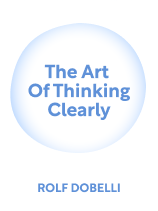

This article is an excerpt from the Shortform book guide to "The Art of Thinking Clearly" by Rolf Dobelli. Shortform has the world's best summaries and analyses of books you should be reading.
Like this article? Sign up for a free trial here .
What is the in-group, out-group bias? Why do we prioritize people who belong to our in-group?
In-group, out-group bias is the tendency to favor and give preferential treatment to members of the same group. By categorizing yourself as a member of a group, you make that membership part of your identity and thus focus on its positive traits.
Here’s why people tend to prioritize their in-group, according to Rolf Dobelli, the author of The Art of Thinking Clearly.
In-Group, Out-Group Bias
Part of humanity’s desire to be in a group is prioritizing your own group above others. As Dobelli explains, this means you magnify your group’s positive traits and minimize those of other groups: a phenomenon called in-group, out-group bias.
Dobelli notes that there are three components to believing your group is better than others:
1. Groups frequently form around unimportant things, but your brain locks onto those similarities and prioritizes them above any differences. (Shortform note: These prioritized in-groups can change depending on the situation. If you’re driving and a pedestrian blocks the road, you’ll be annoyed at pedestrians. Your in-group is “drivers,” while “pedestrians” is an out-group. However, if you’re later a pedestrian and a car honks at you, you’ll be annoyed at drivers. Your in-group shifted to “pedestrians” according to the situation, and your feelings likewise shifted.)
2. When you’re in a group, your brain views the members of other groups as more similar than they are. Your brain wants others to fit neatly into their opposing box, so it ignores any conflicting information. (Shortform note: Research confirms that people can identify minor differences between in-group faces while missing differences between out-group faces. Your brain recognizes when individuals aren’t in your in-group and puts less effort into processing or remembering their faces, meaning it doesn’t register differences between these faces.)
3. Groups usually form around people’s opinions, which means you spend a lot of time with other people who hold the same opinions as you. Because everyone around you agrees, you believe your group must be right. (Shortform note: On social media, this kind of group is called an echo chamber. Social media algorithms direct you to people with similar beliefs, which reinforces your underlying beliefs. In turn, interacting with those people reinforces the algorithm.)
In the modern day, Dobelli argues, group bias is a dangerous phenomenon that blinds you to the facts of a situation and enforces prejudice. (Shortform note: To counter this bias, spend time with members of out-groups. Focus on points of connection, rather than differences, and recognize when your groups are formed around arbitrary means.)

———End of Preview———
Like what you just read? Read the rest of the world's best book summary and analysis of Rolf Dobelli's "The Art of Thinking Clearly" at Shortform .
Here's what you'll find in our full The Art of Thinking Clearly summary :
- A detailed look at the most common logical fallacies that inhibit decision-making
- How to recognize and overcome these fallacies to make better decisions
- Why you value things for arbitrary reasons






